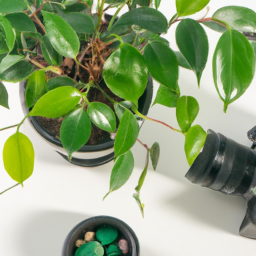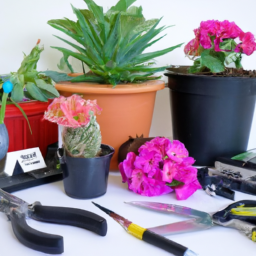
Benefits of Indoor Gardening: A Comprehensive Guide for Beginners
Introduction
Welcome to the ultimate beginner’s guide to indoor gardening! Whether you have a green thumb or are completely new to gardening, indoor gardening offers a world of possibilities. Not only does it allow you to bring nature into your home, but it also provides numerous benefits for your well-being. In this comprehensive guide, we will explore the various advantages of indoor gardening and provide you with step-by-step instructions to get started.
The Health Benefits
Indoor gardening goes beyond beautifying your living space; it also has numerous health benefits. Let’s delve into some of the key advantages:
1. Improved Air Quality: One of the most significant benefits of indoor gardening is its ability to enhance the air quality in your home. Plants naturally filter the air by absorbing carbon dioxide and releasing oxygen. They also remove harmful toxins, such as formaldehyde and benzene, which are commonly found in indoor environments. By having indoor plants, you can enjoy cleaner and fresher air.
2. Stress Reduction: Indoor gardening has been proven to reduce stress levels and promote relaxation. The act of nurturing plants and watching them grow can have a calming effect on the mind. Additionally, plants release moisture vapor, increasing humidity levels in the room, which can help create a more serene environment.
3. Mental Well-being: Studies have shown that indoor gardening can have a positive impact on mental health. The presence of plants indoors can help reduce symptoms of depression, anxiety, and improve overall mood. Gardening also provides a sense of purpose and accomplishment, boosting self-esteem and confidence.
The Practical Benefits
Aside from the health advantages, indoor gardening also offers practical benefits that make it an attractive option for beginners. Let’s explore some of these advantages:
1. Year-Round Gardening: Unlike outdoor gardening, indoor gardening allows you to grow plants all year round, regardless of the season. This means you can enjoy fresh herbs, vegetables, and flowers regardless of the climate outside. It also gives you the freedom to experiment with a wide variety of plant species.
2. Space Utilization: Indoor gardening is perfect for those with limited outdoor space or living in apartments. You can create a beautiful garden even in small areas by utilizing vertical space, hanging planters, or windowsills. With indoor gardening, you can transform any corner of your home into a green oasis.
3. Pest Control: Indoor gardening significantly reduces the risk of pests and diseases that commonly affect outdoor plants. By growing plants indoors, you have greater control over the environment, making it easier to prevent infestations and maintain healthier plants. This eliminates the need for harmful pesticides and ensures the well-being of your plants.
Getting Started: Step-by-Step Guide
Now that you understand the benefits of indoor gardening, let’s dive into the step-by-step process to help you get started:
1. Assess Your Space: Begin by evaluating the available space in your home. Consider factors such as lighting conditions, temperature, and humidity levels. Choose an area that receives sufficient natural light or invest in artificial grow lights if needed.
2. Select Suitable Plants: Next, choose plants that thrive indoors and align with your gardening goals. Consider factors such as light requirements, maintenance needs, and the available space. Some popular indoor plants include pothos, snake plants, spider plants, and peace lilies.
3. Choose the Right Containers: Select containers that provide adequate drainage and are appropriate for the size of your plants. Ensure they have drainage holes to prevent waterlogging, which can lead to root rot. You can choose from a variety of containers such as pots, hanging baskets, or even repurpose household items.
4. Prepare the Soil: Use a well-draining potting mix specifically formulated for indoor plants. Avoid using garden soil as it may contain pests or diseases. You can also enhance the soil with organic matter or fertilizers to provide essential nutrients for your plants.
5. Planting and Watering: Carefully transplant your chosen plants into the prepared containers, ensuring they are placed at the appropriate depth. Water your plants thoroughly but avoid overwatering, as it can lead to root rot. Allow the soil to dry out slightly between watering sessions.
6. Provide Adequate Light: Most indoor plants require bright, indirect light to thrive. Place your plants near windows or use artificial grow lights to supplement natural light. Monitor the light levels and adjust the placement of your plants accordingly to ensure they receive the optimal amount of light.
7. Maintain Proper Humidity: Indoor environments often have lower humidity levels, which can be detrimental to certain plants. Increase humidity by misting your plants regularly, placing them on trays filled with water and pebbles, or using a humidifier. This will create a more favorable environment for your indoor garden.
8. Regular Maintenance: Indoor plants require regular care to thrive. This includes pruning, removing dead leaves, and periodically checking for pests or diseases. Additionally, monitor the moisture levels in the soil and adjust your watering schedule accordingly.
9. Enjoy the Benefits: Sit back, relax, and enjoy the beauty and benefits of your indoor garden. Take time to appreciate the positive impact it has on your well-being and the ambiance of your home. Experiment with different plants and techniques to further enhance your indoor gardening experience.
Conclusion
Indoor gardening offers a wealth of benefits for beginners and seasoned gardeners alike. From improving air quality to reducing stress levels, it provides a rewarding and therapeutic experience. By following this comprehensive guide, you now have the knowledge and tools to embark on your indoor gardening journey. So, go ahead and create your own green oasis within the comfort of your home!
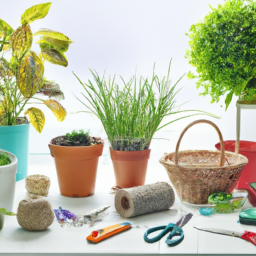
Choosing the Right Plants for Indoor Gardening: A Beginner’s Guide
Indoor gardening is a fantastic way to bring nature into your home and create a vibrant, green space. However, not all plants are suitable for indoor environments. To ensure the success of your indoor garden, it’s important to choose the right plants that can thrive in the limited light and space conditions typically found indoors. In this beginner’s guide, we will provide you with a step-by-step process to help you select the perfect plants for your indoor garden.
Understanding Light Requirements
The first step in choosing the right plants for indoor gardening is to understand their light requirements. Light is crucial for plant growth, and different plants have varying needs when it comes to light intensity and duration. Some plants require direct sunlight, while others can thrive in low-light conditions.
Before selecting plants, assess the lighting conditions in your home. Observe which areas receive direct sunlight, indirect light, or are in shade throughout the day. This will help you determine the types of plants that will thrive in each location.
If you have windows that provide direct sunlight for at least six hours a day, you can choose plants that require high light intensity. These include succulents, cacti, and many flowering plants. On the other hand, if you have limited natural light, opt for plants that can tolerate low-light conditions, such as snake plants, pothos, or peace lilies.
Considering Space Constraints
Another important factor to consider when choosing indoor plants is the available space in your home. Some plants require more room to grow, while others are more compact and suitable for smaller spaces. Assess the space you have available, including shelves, tabletops, or hanging areas, and choose plants accordingly.
If you have limited space, consider vertical gardening options such as hanging baskets or wall-mounted planters. This allows you to make the most of your vertical space and create a lush indoor garden even in small apartments or rooms.
Additionally, take into account the size of the mature plant. Some plants, like fiddle leaf figs or monstera deliciosas, can grow quite large and may not be suitable for small spaces. Opt for compact varieties or plants that can be pruned easily to maintain a manageable size.
Assessing Maintenance Requirements
The final step in choosing the right plants for indoor gardening is assessing their maintenance requirements. Different plants have different needs when it comes to watering, humidity, and temperature. It’s essential to select plants that align with your lifestyle and the amount of time you can dedicate to their care.
If you’re a busy individual or a frequent traveler, choose plants that are low-maintenance and can tolerate some neglect. Succulents, for example, are drought-tolerant and require infrequent watering. Spider plants and ZZ plants are also known for their resilience and ability to withstand varying conditions.
On the other hand, if you enjoy spending time caring for plants and have a green thumb, you can opt for more demanding varieties. Orchids, for instance, require specific humidity and temperature conditions, as well as regular watering and fertilizing.
Remember to consider your own preferences and the level of commitment you are willing to invest in maintaining your indoor garden. This will ensure that you choose plants that not only thrive in your home but also bring you joy and satisfaction.
By following these steps, you’ll be well on your way to selecting the perfect plants for your indoor garden. Remember to consider the light requirements, space constraints, and maintenance needs of each plant you choose. With the right selection, you can create a beautiful and thriving indoor garden that brings life and tranquility to your home.
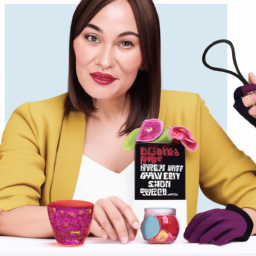
Essential Tools and Equipment for Indoor Gardening: A Beginner’s Checklist
Introduction
Indoor gardening has gained immense popularity in recent years, allowing individuals to bring the beauty of nature into their homes. Whether you have a green thumb or are just starting your gardening journey, having the right tools and equipment is crucial for success. In this beginner’s guide, we will walk you through the essential tools and equipment you need to kickstart your indoor gardening adventure.
1. Containers and Pots
When it comes to indoor gardening, choosing the right containers and pots is vital. Opt for containers that have drainage holes to prevent waterlogging and promote healthy root growth. Consider the size of the container based on the plants you wish to grow – larger plants require bigger pots to accommodate their root systems. Additionally, ensure that the containers are made of materials that are suitable for indoor use, such as ceramic, plastic, or fabric pots.
When selecting pots, keep in mind the aesthetic aspect as well. Choose containers that complement your interior décor and add a touch of style to your indoor garden. Hanging baskets, wall-mounted planters, and decorative pots can enhance the visual appeal of your space while housing your beloved plants.
2. Soil and Growing Medium
The right soil and growing medium are essential for indoor gardening success. Unlike outdoor gardens, indoor plants rely solely on the soil you provide them. Opt for a high-quality potting mix that is well-draining and rich in organic matter. Avoid using garden soil, as it tends to be too heavy and may contain pests or diseases that can harm your indoor plants.
If you prefer a more hands-on approach, you can create your own soil mix by combining equal parts of peat moss, perlite, and vermiculite. This mixture provides excellent drainage and aeration while retaining the necessary moisture for your plants’ root development.
In addition to traditional soil, consider alternative growing mediums such as coco coir, which is derived from coconut husks. Coco coir is an eco-friendly option that retains moisture well and promotes healthy root growth. It is also lightweight and free from pests and diseases, making it an excellent choice for indoor gardening.
3. Watering Tools
Proper watering is crucial for the health and vitality of your indoor plants. Invest in a watering can or a hose attachment with a gentle showerhead to ensure a controlled and even distribution of water. This helps prevent overwatering, which can lead to root rot, as well as underwatering, which can cause dehydration and stunted growth.
Consider using a moisture meter or your finger to check the moisture level of the soil before watering. This will help you determine if your plants need watering or if the soil is still sufficiently moist. Remember that different plants have varying water requirements, so it’s essential to research the specific needs of each plant in your indoor garden.
Conclusion
As you embark on your indoor gardening journey, having the right tools and equipment is crucial for success. From containers and pots to soil and watering tools, each item plays a vital role in creating a thriving indoor garden. Remember to choose containers with proper drainage, use high-quality soil or growing mediums, and invest in watering tools that promote optimal moisture levels. With the right tools and equipment at your disposal, you’ll be well on your way to cultivating a lush and vibrant indoor garden that brings joy and tranquility to your home. Happy gardening!
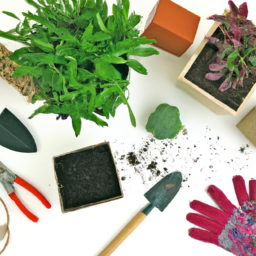
Ultimate Beginner’s Guide to Indoor Gardening
4. Indoor Gardening Techniques: Tips and Tricks for Beginners
Welcome to the ultimate beginner’s guide to indoor gardening! In this section, we will explore various techniques, tips, and tricks that will help you kickstart your indoor gardening journey. Whether you have a spacious apartment or a tiny studio, indoor gardening can bring life and beauty to your living space. Let’s dive in!
Choosing the Right Plants
When it comes to indoor gardening, selecting the right plants is crucial for success. Consider factors such as lighting conditions, temperature, and humidity levels in your home. Some popular indoor plants that thrive in low-light conditions include pothos, snake plants, and peace lilies. On the other hand, if your space receives ample sunlight, you can opt for plants like succulents, herbs, or flowering plants.
Additionally, take into account your gardening goals and personal preferences. Are you looking for plants that purify the air, provide fragrance, or simply add aesthetic appeal? Research different plant species and their specific care requirements to ensure they align with your goals and the conditions in your home.
Once you have chosen your plants, it’s time to prepare the ideal environment for them to flourish.
Creating the Perfect Indoor Garden Environment
Lighting:
Light is one of the most critical factors for indoor gardening success. Most plants require at least six hours of sunlight each day. If natural light is limited in your space, consider using artificial grow lights. LED grow lights are energy-efficient and provide a full spectrum of light, mimicking natural sunlight. Position your plants near windows or under grow lights to ensure they receive adequate light for photosynthesis.
Temperature and Humidity:
Indoor plants generally thrive in temperatures between 60°F and 75°F (15°C and 24°C). Avoid placing your plants near drafty windows or heating vents, as sudden temperature fluctuations can harm them. Additionally, maintaining optimal humidity levels is crucial. Most indoor plants prefer humidity levels between 40% and 60%. You can increase humidity by using a humidifier, placing a tray of water near the plants, or regularly misting the leaves.
Soil and Potting:
Choosing the right soil and pots is essential for the health of your indoor plants. Opt for well-draining potting soil that allows excess water to escape, preventing root rot. Consider using pots with drainage holes to ensure proper water drainage. If you prefer decorative pots without drainage holes, use a layer of gravel or pebbles at the bottom to prevent waterlogging.
Watering and Fertilizing:
Water your plants thoroughly but avoid overwatering. Check the moisture level of the soil before watering again. Stick your finger about an inch into the soil – if it feels dry, it’s time to water. Different plants have different watering needs, so research the specific requirements of your chosen plants. Fertilize your indoor plants regularly with a balanced houseplant fertilizer to provide essential nutrients for growth.
Common Indoor Gardening Challenges and Solutions
Pests:
Indoor plants are not immune to pests. Common pests include aphids, spider mites, and fungus gnats. To prevent infestations, regularly inspect your plants for signs of pests. If you notice any, isolate the affected plant and treat it with organic pest control methods or insecticidal soap. Additionally, maintaining good plant hygiene and avoiding overwatering can help prevent pest problems.
Diseases:
Just like outdoor plants, indoor plants can also fall prey to diseases. Overwatering, poor air circulation, and high humidity levels can contribute to fungal diseases. Ensure proper ventilation in your indoor garden and avoid overcrowding plants. If you notice any signs of disease, promptly remove the affected leaves or plants to prevent the spread.
Growth and Pruning:
Regular pruning is essential to maintain the shape and health of your indoor plants. Prune away dead or yellowing leaves, and pinch back leggy growth to encourage bushier growth. Additionally, consider repotting your plants when they outgrow their current pots. This allows their roots to have more space to grow and access necessary nutrients.
By following these techniques, tips, and tricks, you will be well on your way to becoming an indoor gardening expert. Remember to observe your plants closely, adjust care routines as needed, and enjoy the therapeutic benefits of nurturing your own indoor garden. Happy gardening!
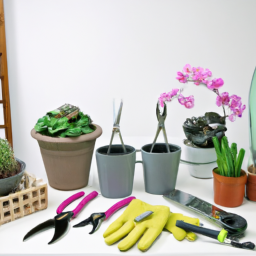
Troubleshooting Common Issues in Indoor Gardening: A Beginner’s Handbook
Introduction
Welcome to the ultimate beginner’s guide to indoor gardening! While indoor gardening can be a rewarding and enjoyable experience, it is not without its challenges. In this handbook, we will explore some common issues that beginners may face and provide you with step-by-step troubleshooting techniques to overcome them. Whether you are a complete novice or have some experience with indoor gardening, this guide will help you navigate through the potential pitfalls and ensure the success of your indoor garden.
Poor Plant Growth
One of the most frustrating issues that beginners encounter in indoor gardening is poor plant growth. If your plants are not thriving as expected, there are several factors that you need to consider:
1. Lighting: Insufficient or improper lighting is often the primary cause of poor plant growth. Most indoor plants require bright, indirect light to flourish. Assess the lighting conditions in your indoor garden and make necessary adjustments. Consider using artificial grow lights if natural light is limited.
2. Watering: Overwatering or underwatering can hinder plant growth. Ensure that you are providing the right amount of water to your plants. Check the moisture level of the soil regularly and adjust your watering schedule accordingly. Remember, different plants have different water requirements.
3. Nutrient Deficiency: Lack of essential nutrients can also stunt plant growth. Use a balanced fertilizer specifically formulated for indoor plants to provide them with the necessary nutrients. Follow the instructions on the fertilizer packaging for proper application.
4. Temperature and Humidity: Incorrect temperature and humidity levels can negatively impact plant growth. Most indoor plants thrive in temperatures between 65-75°F (18-24°C) and prefer moderate humidity levels. Ensure that your indoor garden is within the optimal range for your plants.
5. Pest Infestation: Pests like aphids, spider mites, and mealybugs can damage plants and impede their growth. Regularly inspect your plants for any signs of pest infestation. If detected, treat the affected plants with organic pest control methods or consult a professional for advice.
Yellowing Leaves
Yellowing leaves are a common issue that beginners often encounter in indoor gardening. Here are some possible causes and solutions:
1. Overwatering: Overwatering can lead to waterlogged soil, causing the roots to suffocate and the leaves to turn yellow. Ensure that you are not overwatering your plants. Allow the top inch of the soil to dry out before watering again. Additionally, make sure your pots have drainage holes to prevent water accumulation.
2. Nutrient Deficiency: Yellowing leaves can also indicate a nutrient deficiency, particularly nitrogen. Apply a balanced fertilizer to provide the necessary nutrients to your plants. However, be cautious not to over-fertilize, as it can cause other problems.
3. Lack of Light: Insufficient light can cause leaves to yellow. Evaluate the lighting conditions in your indoor garden and consider providing additional artificial light sources if needed. Ensure that your plants are receiving the recommended amount of light for their specific requirements.
4. Pest Infestation: Certain pests, such as spider mites and whiteflies, can cause yellowing leaves. Check your plants regularly for signs of pests and take appropriate measures to eliminate them using organic pest control methods.
Mold and Fungus
Mold and fungus can be a common issue in indoor gardening, especially in environments with high humidity levels. Here’s how you can address this problem:
1. Proper Air Circulation: Insufficient air circulation can promote the growth of mold and fungus. Ensure that your indoor garden has adequate ventilation. Use fans or open windows to improve air circulation, especially in enclosed spaces.
2. Avoid Overwatering: Overwatering creates a moist environment that is conducive to mold and fungus growth. Water your plants only when the top inch of the soil is dry. Avoid leaving standing water in saucers or trays beneath the pots.
3. Remove Affected Leaves: If you notice mold or fungus on a few leaves, promptly remove them to prevent the spread of the problem. Dispose of the affected leaves in a sealed bag to avoid contaminating other plants.
4. Use Fungicides: If the mold or fungus problem persists, consider using organic fungicides specifically formulated for indoor plants. Follow the instructions on the product label for safe and effective application.
By following these troubleshooting techniques, you can address common issues in indoor gardening and ensure the health and vitality of your plants. Remember, gardening is a continuous learning process, and with time and experience, you will become more adept at identifying and resolving problems. Happy indoor gardening!
Frequently Asked Questions (FAQ)
1. What is indoor gardening?
Indoor gardening refers to the practice of growing plants indoors, typically in containers or pots, using artificial light sources and controlled environmental conditions.
2. Why should I start indoor gardening?
Indoor gardening offers numerous benefits, including the ability to grow plants year-round, even in areas with harsh climates. It also allows you to have fresh herbs, vegetables, and flowers readily available at home.
3. What are the essential tools and materials for indoor gardening?
Some essential tools and materials for indoor gardening include pots or containers, potting soil, seeds or seedlings, artificial lighting (such as grow lights), watering cans, and fertilizers.
4. How much light do indoor plants need?
The light requirements vary depending on the type of plant. Generally, most indoor plants require 10-14 hours of light per day. It’s important to provide them with sufficient light to ensure proper growth and development.
5. How often should I water my indoor plants?
The watering frequency depends on factors such as the type of plant, pot size, and environmental conditions. As a general guideline, check the moisture level of the soil regularly and water when the top inch feels dry.
6. What are some common indoor gardening pests and how can I control them?
Common indoor gardening pests include aphids, spider mites, and fungus gnats. To control them, you can use organic insecticidal soaps, neem oil, or introduce natural predators like ladybugs. Regularly inspecting your plants can help catch pest infestations early.
7. Can I use regular soil from my garden for indoor gardening?
It’s generally not recommended to use regular garden soil for indoor gardening. Garden soil may contain pests, diseases, and weed seeds. Instead, opt for a well-draining potting mix specifically formulated for indoor plants.
8. How can I improve air circulation in my indoor garden?
To improve air circulation, you can place a small fan near your indoor plants. This helps prevent stagnant air, reduces the risk of fungal diseases, and strengthens plant stems.
9. How do I know if my indoor plants need fertilizers?
Indoor plants usually benefit from regular fertilization during the growing season. Look for signs of slow growth, pale leaves, or lack of flowering, which may indicate a need for fertilizers. Choose a balanced indoor plant fertilizer and follow the instructions for application.
10. Can I grow vegetables and herbs indoors?
Absolutely! Many vegetables and herbs can be successfully grown indoors. Some popular choices include tomatoes, peppers, lettuce, basil, and mint. Just ensure they receive adequate light and proper care.
Dr. Olivia Green is a botanist with over two decades of experience in indoor plant cultivation. She holds a Ph.D. in Plant Biology and has dedicated her career to researching plant behavior in controlled environments. Dr. Green is passionate about helping plant enthusiasts master the art of indoor gardening through her extensive knowledge and practical insights.


